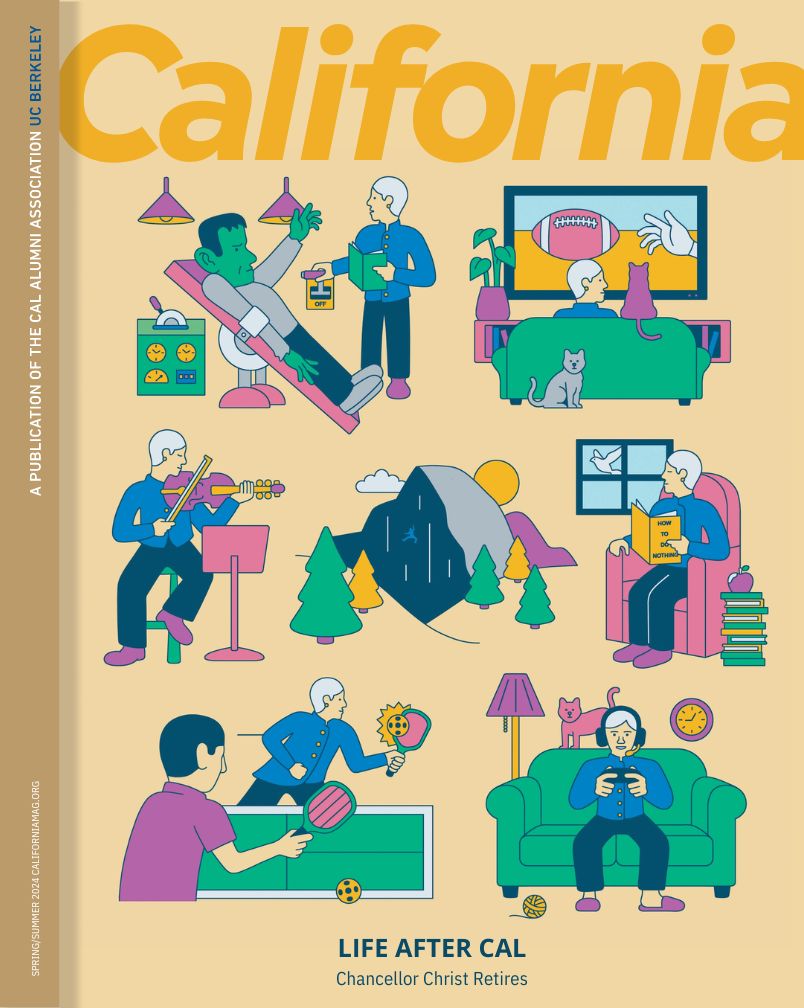Frederick Wiseman’s documentary opus “At Berkeley,” which makes its television debut on PBS Jan. 13, has racked up impressive reviews: Its cumulative critics’ rating on rottentomatoes.com is 86 percent positive, and it was a New York Times’ “Critics Pick.”
Such a reception is noteworthy given the film’s observational style (the legendary director hates the label “cinema verite” but provides no voice-over or narrative commentary) and its running time (at four hours and four minutes, roughly twice as long as the average movie). When California magazine interviewed the director as he was making the movie two years ago, he predicted the film would succeed if it approaches the ambiguity and complexity of what he observed while making it.
But it doesn’t hurt that a number of critics bring to the viewing their own fond recollections of UC Berkeley.
Slate.com film critic Dana Stevens offered a “full (and proud!) disclosure” that she had spent more than a decade working on her Ph.D. at Berkeley. “I worked my way through grad school by teaching in whatever department had work for me, and thus managed to get my degree without accumulating any student debt, which in part accounts for how long it took to finish the damn thing,” she writes. “But in reality, I suspect that I lingered around Berkeley as long as I did, auditing courses and cadging mini-research grants, simply because I loved the place so much.”
Noting that it might be best to view “At Berkeley” in two halves, she enthuses, “I wouldn’t lose a minute of ‘At Berkeley.’ If anything, it made me wish Wiseman had a weekly TV show that monitored the daily life of my alma mater.”
Another writer who discloses his own affection for Berkeley is Salon.com writer Andrew O’Hehir, who grew up on and around the campus where his father, Brendan, was an English professor.
“I think my favorite scene, and the one that puzzled me the most at first,” he writes, “was a long and fascinating conversation with a graduate student who is designing a robotic assistive device for a paraplegic man that enables him to walk upright. In discussing the risks that the man will lean too far backward and fall, the student observes that walking involves that risk for all of us, and that learning to walk is about flirting with the possibility of falling, going right to the edge of instability and sometimes over it.
“Berkeley, that famous hotbed of intellectual ferment and discord, is still walking, in Wiseman’s judgment, but only just. It remains an elite institution of higher learning, but one that like most others in Western society is largely dependent on billionaire donors, corporate sponsorships and government research contracts.”
Among those not enamored with the movie is the New York Post’s Kyle Smith, a Yalie whom The Atlantic once dubbed “America’s most cantankerous film critic.” “Walking the balance beam between exhaustive and exhausting,” Smith writes, Wiseman’s film “casts a nonjudgmental eye on everyone from cement layers to students discussing Thoreau to administrators complaining about budgeting. If only everything were interesting.”
In our upcoming issue of California magazine, we’ll return to Wiseman and feature a brief new interview with him. Among other things, we asked him what drew him to Berkeley in the first place, why “At Berkeley” has so much footage of people doing physical work (mowing lawns, pouring concrete, etc.) and whether he agreed that his films are often “head-scratchers.” He didn’t.
For background, see our previous article What Wiseman Knew.
You can watch its PBS premiere on “Independent Lens,” hosted by Stanley Tucci, on Monday Jan. 13 at 6 p.m. Pacific Time (check local listings).


















